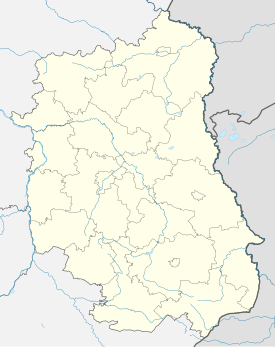
Kraków, written in English as Krakow and traditionally known as Cracow, is the second-largest and one of the oldest cities in Poland. Situated on the Vistula River in Lesser Poland Province, the city dates back to the 7th century. Kraków was the official capital of Poland until 1596 and has traditionally been one of the leading centres of Polish academic, economic, cultural and artistic life. Cited as one of Europe's most beautiful cities, its Old Town was declared the first UNESCO World Heritage Site in the world.

Lesser Poland, often known by its Polish name Małopolska, is a historical region situated in southern and south-eastern Poland. Its capital and largest city is Kraków. Throughout centuries, Lesser Poland developed a separate culture featuring diverse architecture, folk costumes, dances, cuisine, traditions and a rare Lesser Polish dialect. The region is rich in historical landmarks, monuments, castles, natural scenery and UNESCO World Heritage Sites.

Tadeusz Pruszkowski was a Polish painter and art teacher, known primarily for his portraits.
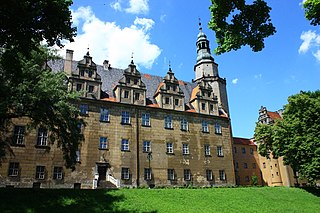
Oleśnica is a town in Lower Silesian Voivodeship, in south-western Poland. It is the administrative seat of Oleśnica County and also of the rural district of Gmina Oleśnica, although it is not part of the territory of the latter, the town being an urban gmina in its own right.

Lubliniecpronounced [luˈblʲiɲet͡s] is a town in southern Poland with 23,784 inhabitants (2019). It is the capital of Lubliniec County, part of Silesian Voivodeship ; previously it was in Częstochowa Voivodeship (1975–1998).

Kazimierz Dolny is a small historic town in east-central Poland, on the right (eastern) bank of the Vistula river in Puławy County, Lublin Voivodeship. Historically it belongs to Lesser Poland, and in the past it used to be one of the most important cities of the province.
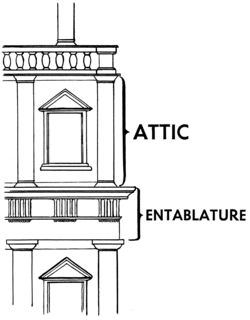
In classical architecture, the term attic refers to a story or low wall above the cornice of a classical façade. The decoration of the topmost part of a building was particularly important in ancient Greek architecture and this came to be seen as typifying the Attica style, the earliest example known being that of the monument of Thrasyllus in Athens.

Puławy County is a unit of territorial administration and local government (powiat) in Lublin Voivodeship, eastern Poland. It was first established in 1867, but its current borders were established on January 1, 1999, as a result of the Polish local government reforms passed in 1998. Its administrative seat and largest town is Puławy, which lies 46 kilometres (29 mi) north-west of the regional capital Lublin. The county also contains the towns of Nałęczów, lying 23 km (14 mi) south-east of Puławy, and Kazimierz Dolny, 11 km (7 mi) south of Puławy.

Chaim Goldberg was a Polish artist, painter, sculptor, and engraver. He is known for being a chronicler of Jewish life in the small Polish village where he was born, Kazimierz Dolny in eastern Poland; and as a painter of Holocaust-era art, which to the artist was seen as an obligation and art with a sense of profound mission.

Bochotnica is a village in the administrative district of Gmina Kazimierz Dolny, within Puławy County, Lublin Voivodeship, in eastern Poland. It lies in historic province of Lesser Poland, approximately 3 kilometres (2 mi) north-east of Kazimierz Dolny, 10 km (6 mi) south of Puławy, and 42 km (26 mi) west of the regional capital Lublin. The village has a population of 1,000, and is located on the right bank of the Vistula, on the road between Puławy and Kazimierz Dolny. The ruins of a 14th-century castle are located nearby.

Józef Jan Gosławski was a Polish sculptor and medallic artist. He was a designer of coins, monuments and medals. Laureate of many artistic competitions; decorated with the Silver Cross of Merit.
Greeks in Poland form one of the country's smaller minority groups, numbering approximately 3,600.

Mannerist architecture and sculpture in Poland dominated between 1550 and 1650, when it was finally replaced with baroque. The style includes various mannerist traditions, which are closely related with ethnic and religious diversity of the country, as well as with its economic and political situation at that time. The mannerist complex of Kalwaria Zebrzydowska and mannerist City of Zamość are UNESCO World Heritage Sites.
The Museum of Polish History or Polish History Museum is a museum and national cultural institute in Warsaw, Poland. The purpose of the museum is to present the most important events in Polish history, with a particular emphasis on Polish traditions of freedom.
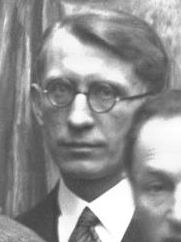
Samuel Finkelstein (1895–1942) was a Jewish oil painter in the interwar Poland who died at the Nazi death camp Treblinka during the Holocaust.

Tomasz Urbanowicz is an architect and a designer of architectural glass art.

St. Jadwiga's Church in Brzeg, Poland, is a Gothic castle church built in the fourteenth-century.

Saints Peter and Paul Church in Strzegom, Poland, is a historic brick, Gothic minor basilica, located in Strzegom as part of the Diocese of Świdnica. Formerly, the basilica belonged to the Sovereign Military Order of Malta. Since 2002, the church serves as a minor basilica. It is the most prized heritage site of the town and is one of the largest churches in Lower Silesia. An example of Lower Silesian and Polish Gothic architecture. the church is enriched with artisanal handicraft, mainly from the fourteenth and fifteenth-century.
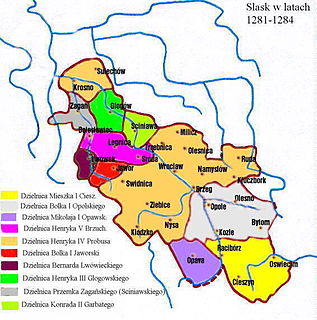
The Duchy of Löwenberg or Duchy of Lwowek was one of the Duchies of Silesia established in 1281 as a division of the Duchy of Jawor. The duchy of Lwowek was ruled by the Silesian Piast, Bernard the Lightsome, with its capital at Lwowek Slaski in Lower Silesia, which gained town rights in 1217.



